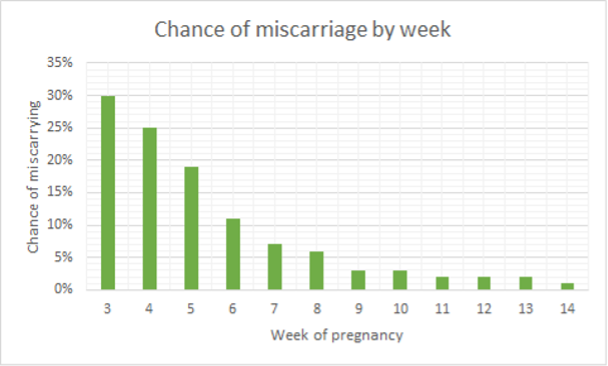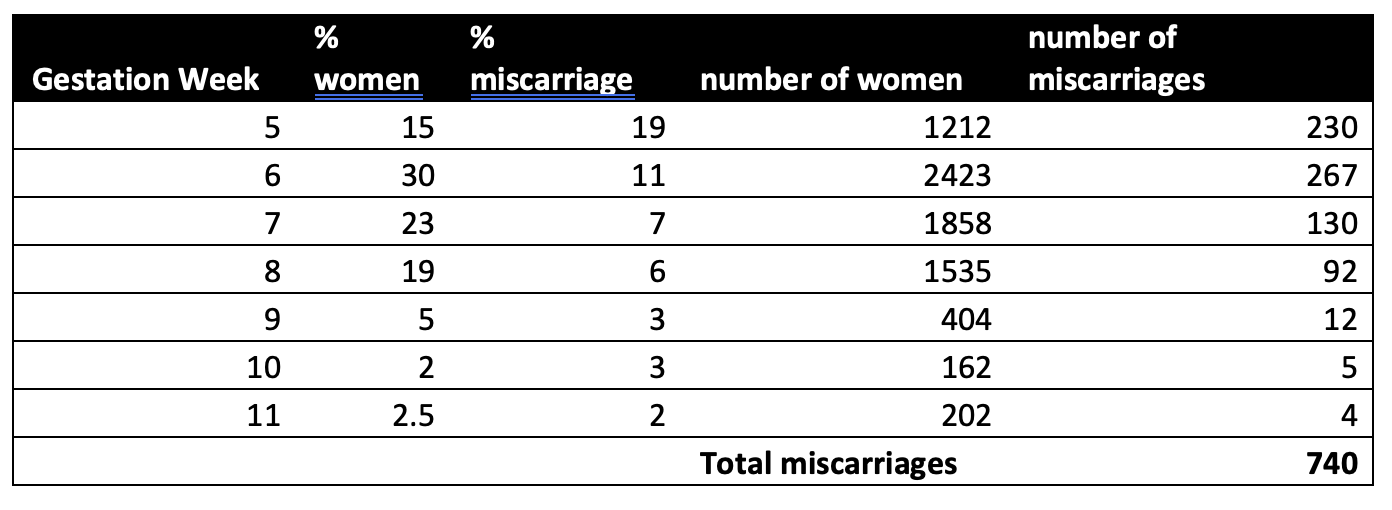Under our current abortion regime, participating GP’s are paid €150 by the HSE for the initial consultation with a woman seeking a medical abortion. In each of the first three years of our abortion regime, the number of these payments of €150, for these initial consultations, has greatly exceeded the number of completed abortions. In fact, it has just been reported (reply to parliamentary question from Carol Nolan TD) that in 2021 this discrepancy actually exceeded 1600: there were 8284 payments in 2021 for initial consultations, and 6683 completed abortions, a difference of 1601.
The suggestion has been made, usually by abortion advocates, that miscarriage, rather than the woman changing her mind, might be an alternative explanation for these 1600 cases. If a woman miscarries during the 3-day reflection period, the argument runs, she will not be returning to the GP to receive abortion pills.
The purpose of this article is to investigate this claim.
I consider three categories of women among these 1600 women who did not proceed with the abortion after the 3-day reflection period:
- Women who presented at or very near 12 weeks gestation and were ineligible for an abortion under Irish law
- Women who suffered miscarriage in the course of the 3-day period. The numbers in this group are what I am trying to estimate in this article
- Women who changed their minds about an abortion in the 3-day period. This will be estimated as 1600 minus the numbers in categories (a) and (b).
How many of the 1600 cases in 2021 were outside the 12-week limit?
According to the 2019 report of the Irish Family Planning Association (I will rely on this IFPA report quite a lot in this article, because the Department of Health does not collect the data I need) about 5% of their clients presented at gestational ages of 11 weeks or more. About half of this 5% (that is, 2.5%) should still have been within 12 weeks after the 3-day reflection period. Since 2.5% of 8284 is 207, about 200 of the 1600 cases in 2021 would likely have been women outside the 12-week limit. This leaves 1400 cases remaining for explanation.
How many of the remaining 1400 cases can be explained as miscarriages?
Most such miscarriages would likely be treated by the woman’s own GP, but in many cases the woman’s GP would not be the same GP she went to for the abortion consultation. That effectively rules out the Department of Health surveying the abortion providers in order to estimate how many of the 1400 cases were actually miscarriages. It could well be that a miscarriage occurred and the abortion provider was unaware of it. In the 2019 IFPA report, for example, it simply states that “12% of our clients did not continue through our abortion service”, without any mention of miscarriage as an explanation.
In this article, I try an alternative statistical approach to answering this question. This statistical investigation would have been entirely straightforward if our Department of Health had followed the example of other countries and collected all relevant data. Instead, I have to make certain assumptions in the analysis below. The first assumption is that miscarriage rates from abroad, for different gestational ages, apply also to our group of 8000+ women, at least approximately. The second assumption is that the gestational age distribution reported by the IFPA in 2019, for a sample of their clients in that year, is representative of the national picture.
There is a lot of material on the internet about miscarriage rates at different gestational ages. I did an internet search by entering “miscarriage rates by gestational age”. I was unable to locate any Irish data on miscarriage rates.
The chart below, which I downloaded from the internet, seemed to me a fair summary of the overall miscarriage rate data from the internet search. It shows a sharply declining miscarriage rate in the early weeks of gestation.
I assume in what follows that miscarriage rates in Ireland are broadly in line with this chart:

Not all of this chart is relevant to our investigation, only the part from 5 to 11 weeks gestation inclusive. In the IFPA 2019 report, for example, none of their clients was below 5 weeks gestation.
What is the gestational age profile for women seeking medical abortions here?
As the Department of Health did not collect the information, we do not have data for how many women nationally presented at each of Week 5, Week 6, Week 7, etc. Clearly, as miscarriage rates differ quite substantially at different gestational ages, we need some estimate of these numbers in order to proceed.
There is a useful chart in the IFPA annual report for 2019 showing the gestational ages for 155 of their clients seeking abortions in that year. This chart shows that approximately 15% of these clients presented at 5-6 weeks gestation (“Week 5” in the terminology used in the chart above), 30% presented at 6-7 weeks (Week 6) etc.
These figures from IFPA are used in the Table below.
Calculating the number of miscarriages
We are now in a position to estimate how many of the 1400 women per year (who attended the initial consultation, and were within the 12-week limit, but did not complete the abortion after the 3-day period) might have had a miscarriage. See Table below, based on data from the IFPA 2019 report for percentages of women presenting at each gestation, and on miscarriage data from the chart above. As explained earlier, in this Table, too, I used 2.5% as the percentage of women at Week 11 gestation who were within the 12-week limit after allowing for the 3-day reflection period.
The numbers in Column 4 of the Table below were obtained by applying the percentages in Column 2 to a total of 8077 women. Whereas 8284 women presented in 2021 for the initial abortion consultation, an estimated 207 of these were outside the 12-week limit. The figure of 8077 was obtained as 8242 minus 207.
The number of miscarriages in Column 5 was obtained by applying the percentages in Column 3 to the numbers in Column 4.

From the Table, we see that our estimate of miscarriages is 740 out of the 8077 initial presentations in 2021.
But there is one very important adjustment that needs to be made to this estimate. The estimate of 740 miscarriages is for miscarriages in all of gestation Week 5, all of Week 6, etc. But what we are trying to estimate is miscarriages in the 3-day reflection period.
Three days is less than half a week. This suggests that a much more accurate estimate of miscarriages would be half of 740, which is 370.
How many of the 1601 women changed their minds in 2021?
The estimate at (a) above was 207 women outside the 12-week limit, and the estimate at (b) was 370 women miscarrying.
It follows that 1601 – 207 – 370 = 1024 is our estimate of the number of women who changed their mind about abortion in 2021.
That figure of 1024 is remarkably close to the figure of 1000 being used as part of the Life Institute’s current billboard campaign.
Conclusion
All the data used in this analysis are approximations, and different approximations would have produced different results. The approximations used here would have to be wildly inaccurate, however, to make any material change to the claim being made, by pro-life organisations, that about 1000 lives are being saved per year here by the 3-day reflection period that is built into our abortion legislation.